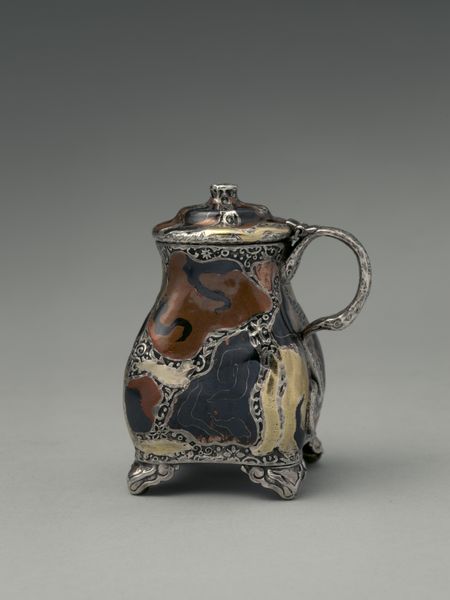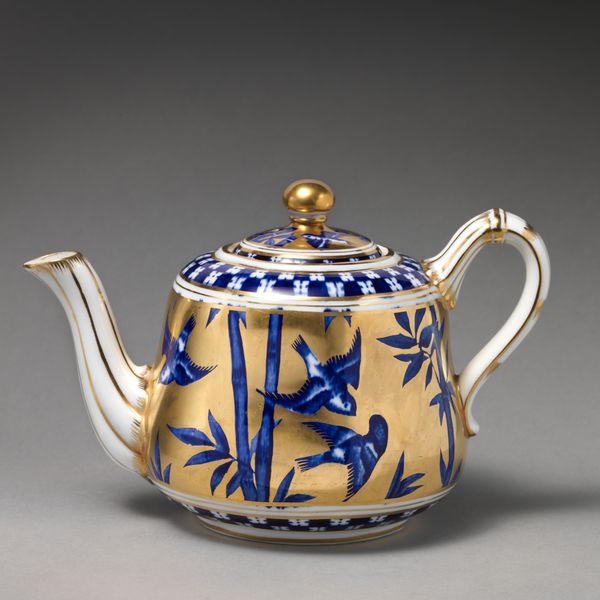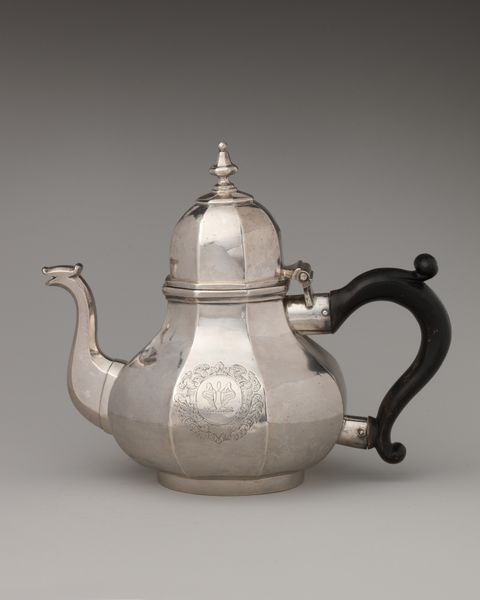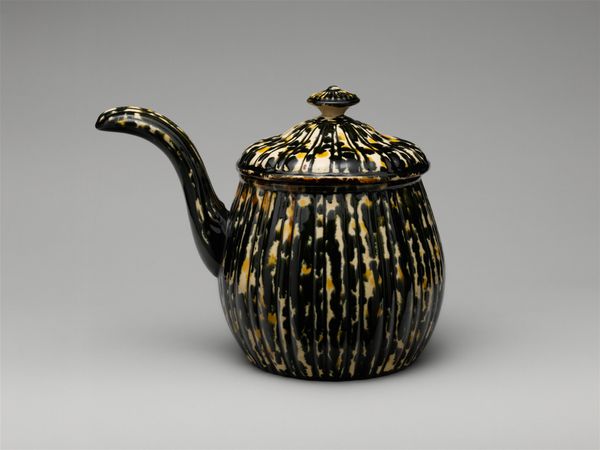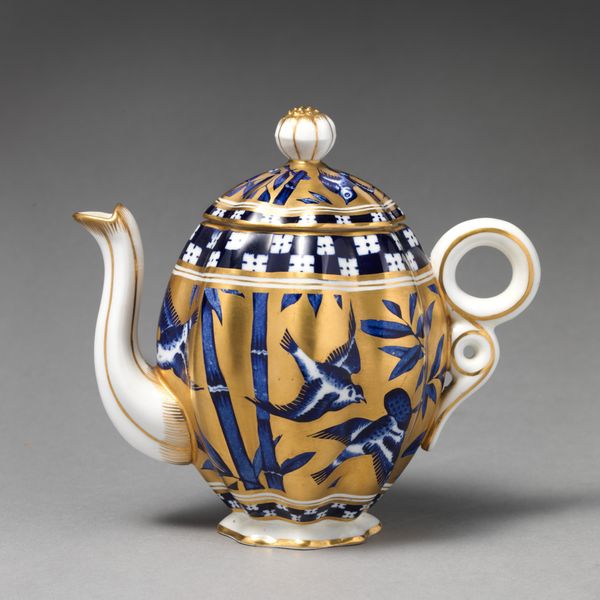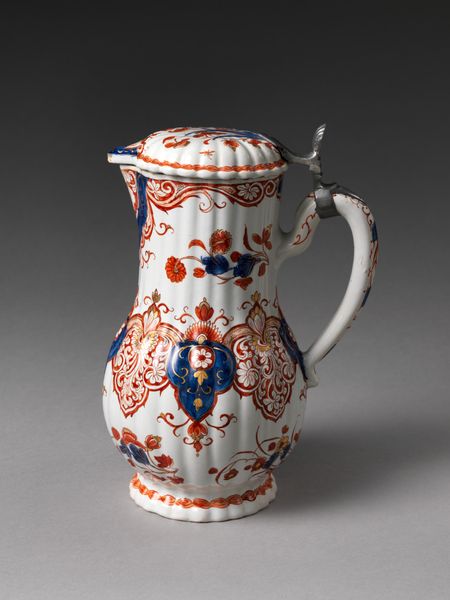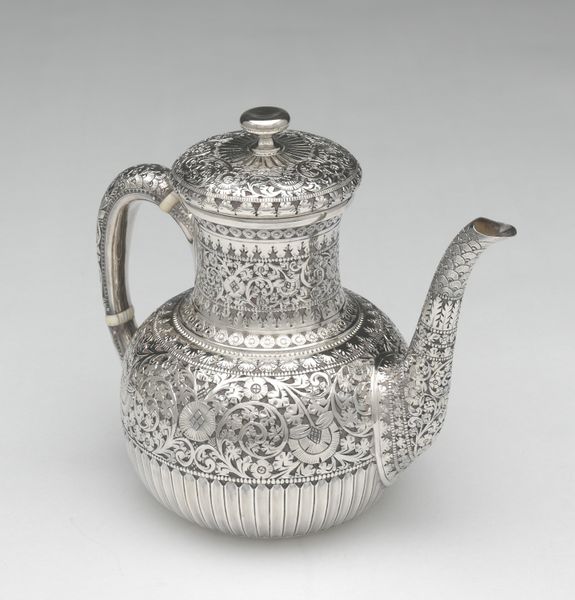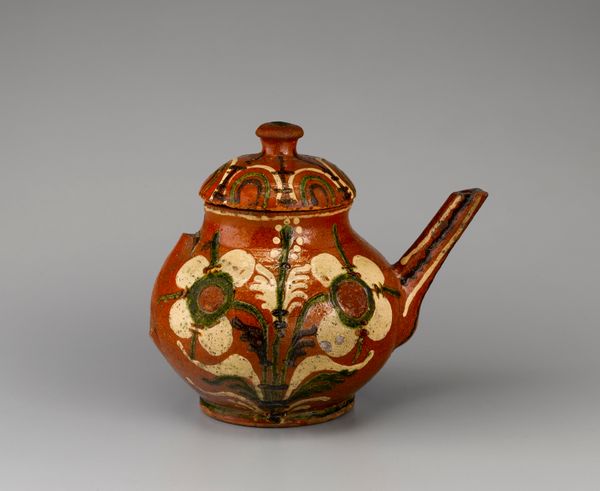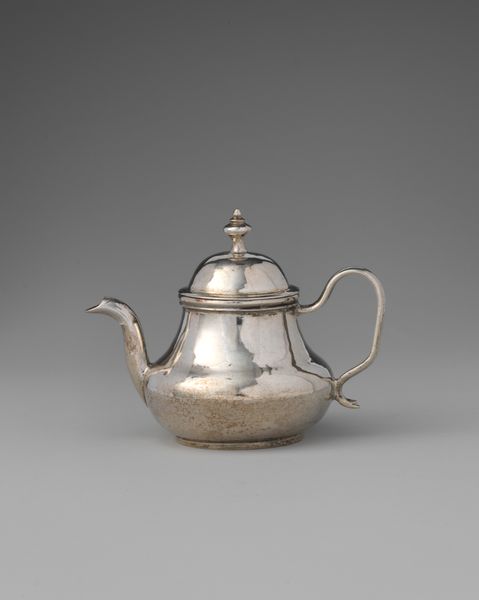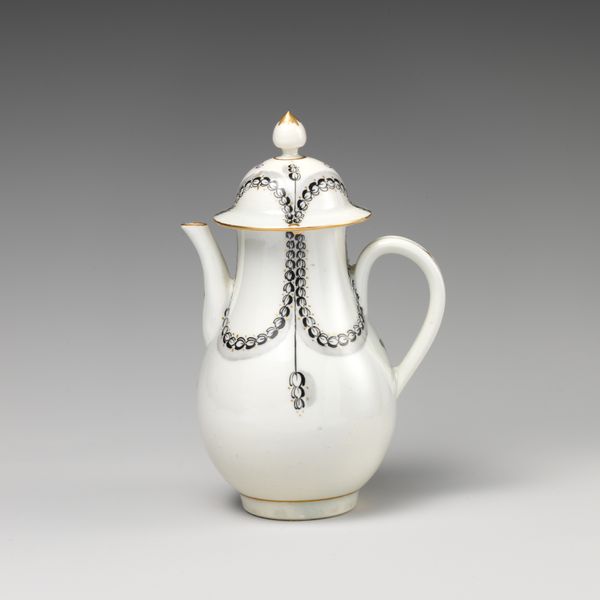
ceramic, earthenware
#
asian-art
#
ceramic
#
japan
#
earthenware
#
decorative-art
Dimensions: H. 3 3/4 in. (9.5 cm)
Copyright: Public Domain
Editor: Here we have a ceramic earthenware piece identified as a "Spouted Pouring Vessel" by Ogata Kenzan, with the creation date unspecified. The black floral designs against the cream background feel really elegant and stylized, almost like an intentional reclaiming of domestic space. How would you interpret this work? Curator: The Kenzan piece presents an interesting juxtaposition. While seemingly decorative, its existence as a "pouring vessel" hints at domesticity, typically coded as feminine, in tension with Kenzan's status as a male artist. How do we contextualize male creation within artistic domains frequently deemed 'craft' rather than 'art', and how might these perceived hierarchies contribute to societal structures? Editor: So you're saying that something as simple as a teapot can make us question power dynamics within art and society? Curator: Precisely! The cultural valuation of the "decorative" versus the "fine" arts has long been gendered and racialized. Examining the creation and use of this vessel invites conversations about labor, class, and the dismissal of certain artistic expressions. Can we also discuss the material itself, the earthy ceramic, as speaking to tradition and grounding oneself? Editor: The use of earthenware does make it feel less precious, more connected to the everyday. Curator: Consider too that the flowers, seemingly innocuous, might hold hidden symbolism depending on the specific blooms and their cultural interpretations. Kenzan would likely have been acutely aware of such potential layered meanings. How can this piece inform discourse on gender, labor, and art categorization? Editor: It is amazing how a simple pouring vessel can provoke a layered discussion about historical social issues. Thanks! Curator: Absolutely, questioning traditional norms allows for critical re-evaluation and recognition of art's potential agency for fostering crucial conversations. It invites one to look closer at social norms, especially surrounding the classification of "art."
Comments
No comments
Be the first to comment and join the conversation on the ultimate creative platform.
